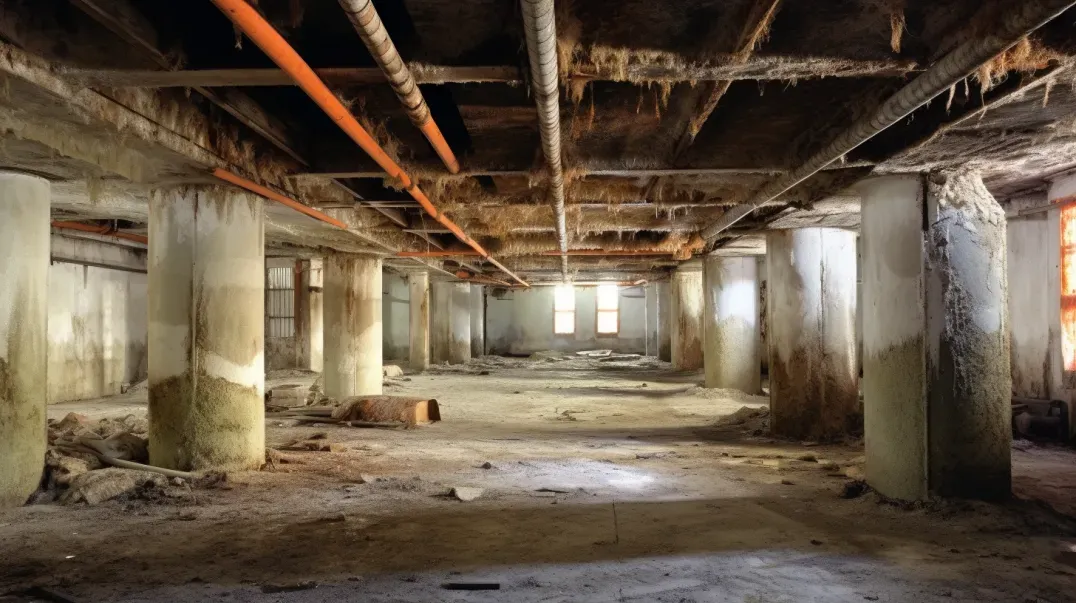
In the realm of rental property management, the significance of adequate insulation often goes underappreciated. Yet, its impact on tenant comfort, energy conservation, and legal adherence cannot be overstated. As environmental awareness rises and energy costs continue to climb, the role of insulation in rental properties emerges as a pivotal factor in creating sustainable, comfortable, and legally compliant living spaces. This blog delves into the multifaceted importance of insulation, highlighting how it serves as a cornerstone for energy efficiency, tenant satisfaction, and regulatory compliance in the rental housing market.
Proper insulation does more than just keep a home warm in the winter and cool in the summer. It stands at the crossroads of operational cost-efficiency and tenant well-being, directly influencing utility bills, indoor air quality, and overall comfort. For landlords and property managers, investing in high-quality insulation translates into tangible benefits: enhanced property value, reduced energy consumption, and an attractive selling point for potential renters.
Moreover, the evolving landscape of building codes and regulations underscores the legal imperatives of insulation. Jurisdictions worldwide are tightening their energy efficiency requirements, making insulation a critical aspect of compliance. Failure to meet these standards can result in penalties, legal challenges, and diminished property appeal.
As we explore the importance of insulation in rental properties, we'll uncover the strategies for optimizing insulation effectiveness, the latest advancements in insulation materials and technologies, and the critical role of ongoing maintenance. Whether you're a property owner looking to improve your investment or a tenant seeking comfort and cost savings, understanding the value of insulation is key to making informed decisions in today's rental market.
Understanding the Importance of Proper Insulation in Rentals
The role of insulation in rental properties extends far beyond just a technical aspect of building construction; it is a critical factor that influences energy efficiency, tenant comfort, property valuation, and compliance with legal standards. This blog explores the multifaceted benefits of proper insulation in rental properties and delves into the legal and regulatory framework governing insulation requirements, highlighting both landlord obligations and tenant rights.
Benefits of Insulation for Rental Properties
Insulation serves as a key component in managing the energy consumption and environmental footprint of rental properties, while also significantly affecting the living conditions and satisfaction of tenants.
- Energy Cost Savings: Proper insulation reduces the need for heating and cooling, leading to substantial energy cost savings. By maintaining a more consistent indoor temperature, insulation helps in lowering utility bills, a benefit that can be shared between landlords and tenants through reduced operational costs and potentially lower rent.
- Enhanced Comfort and Property Value Improvement: Beyond energy savings, good insulation contributes to a more comfortable living environment by stabilizing indoor temperatures and reducing noise pollution. This enhanced comfort can increase the attractiveness of the property to potential renters, thereby improving occupancy rates and potentially raising the property's market value.
- Environmental Impact and Sustainability Considerations: Insulation plays a crucial role in reducing a property's carbon footprint by decreasing energy consumption. For landlords and tenants alike who are conscious of their environmental impact, investing in high-quality, sustainable insulation materials can further align their properties with green building practices, contributing to broader sustainability goals.
Legal and Regulatory Aspects
Understanding the legal landscape surrounding insulation in rental properties is essential for both landlords and tenants to ensure compliance and protect their rights.
- Overview of Landlord Obligations Regarding Insulation Under Local Housing Codes: Many regions have specific requirements for insulation in rental properties, often as part of broader energy efficiency or habitability standards. Landlords must be aware of these regulations to avoid penalties and ensure their properties meet the minimum legal standards for insulation.
- Tenant Rights Related to Insulation and Habitability: Tenants have the right to live in a habitable property, which includes adequate insulation to ensure reasonable comfort and energy efficiency. Tenants facing issues with inadequate insulation may have legal recourse, depending on local laws, to request repairs or improvements from their landlords.
The importance of proper insulation in rental properties cannot be overstated, with implications for energy efficiency, tenant satisfaction, property value, and legal compliance. By prioritizing high-quality insulation and staying informed about the latest regulations, landlords can not only enhance their properties but also contribute to a more sustainable and equitable housing market.
Landlord Responsibilities and Considerations in Insulation
For landlords, ensuring that rental properties are properly insulated is not just about enhancing energy efficiency; it's also a matter of tenant comfort, property value, and legal compliance. This blog addresses the critical aspects of assessing insulation needs and selecting the appropriate insulation solutions, providing landlords with the knowledge to make informed decisions that benefit both their properties and their tenants.
Assessing Insulation Needs
Understanding the current state of insulation in your rental properties is the first step towards making any necessary improvements. Here's how landlords can evaluate insulation needs effectively:
- How to Evaluate the Current State of Insulation: Conduct a thorough inspection of the property's insulation, focusing on areas prone to energy loss such as attics, walls, and basements. Consider hiring a professional energy auditor for a comprehensive assessment, which can reveal hidden issues and provide specific recommendations.
- When and Why to Consider Insulation Replacement: Insulation replacement should be considered if your property experiences high energy bills, uneven heating or cooling, or if the existing insulation is damaged, outdated, or inadequate for your climate. Upgrading insulation not only improves energy efficiency but also enhances tenant comfort and satisfaction, potentially increasing the property's appeal and value.
Choosing the Right Insulation Solution
Selecting the most appropriate insulation solution requires careful consideration of several factors to ensure effectiveness and cost-efficiency.
- Factors to Consider: Key considerations include the type of property (e.g., single-family home, multi-unit building), the local climate (which influences the required R-values for insulation), and specific tenant needs (such as allergies that might prefer certain insulation materials over others). Understanding these factors will help you choose insulation that meets the unique requirements of your property and tenants.
- Cost-effective and Durable Insulation Options for Rental Properties: Landlords should look for insulation solutions that offer a balance between initial cost, durability, and long-term energy savings. Options such as fiberglass, cellulose, and certain types of foam insulation can be cost-effective choices that provide lasting benefits. Additionally, exploring green insulation materials like sheep's wool or recycled denim may appeal to environmentally conscious tenants and contribute to a healthier indoor environment.
For landlords, the responsibility of maintaining and improving insulation in rental properties is an ongoing commitment that pays dividends in tenant satisfaction, energy savings, and property value. By systematically assessing insulation needs and carefully selecting the right solutions, landlords can ensure their properties remain competitive, comfortable, and compliant with energy efficiency standards.
Tenant Awareness and Communication
In the quest for more comfortable, energy-efficient living spaces, understanding and communication play pivotal roles. Tenants often face challenges related to insulation and energy efficiency that can impact their comfort and utility costs. This blog explores tenants' rights and expectations, offers advice on communicating effectively with landlords, and provides tips for collaborating on insulation improvements, ensuring a win-win situation for both parties.
Understanding Tenant Rights and Expectations
Tenants have certain rights and expectations regarding the insulation and overall energy efficiency of their rented homes. Being informed is the first step toward advocating for a better living environment.
- Tenant Rights Related to Insulation and Energy Efficiency: Many jurisdictions have specific regulations that set minimum standards for rental property insulation and energy efficiency. Tenants have the right to live in a property that meets these standards, ensuring reasonable warmth in the winter and coolness in the summer, without incurring excessive energy costs.
- How Tenants Can Communicate Concerns or Requests Effectively: Clear, respectful communication is key. Tenants should document their concerns, gather information on local regulations, and present their case to the landlord in writing, outlining how insulation improvements could benefit both parties. Providing examples of potential solutions and highlighting the long-term savings and property value enhancements can also be persuasive.
Collaborating with Landlords on Insulation Improvements
Improving insulation in a rental property often requires tenants and landlords to work together. Here are some tips for tenants looking to propose insulation upgrades:
- Tips for Tenants to Propose Insulation Upgrades: Research the most effective and cost-efficient insulation options suitable for the property. Prepare a proposal that includes the benefits of upgrading insulation, such as lower energy bills, increased comfort, and potential tax incentives or rebates that the landlord might take advantage of.
- Navigating Lease Agreements and Negotiations Related to Insulation: Understand the terms of your lease agreement regarding modifications or improvements to the property. When negotiating insulation improvements, consider offering to extend your lease or suggesting a shared cost arrangement. Always ensure any agreements made are documented in writing, with clear terms on the scope of work, cost-sharing, and any adjustments to the rent or lease terms.
For tenants, being informed about their rights and understanding how to effectively communicate and collaborate with landlords on insulation improvements can lead to significant enhancements in living conditions and energy efficiency. By approaching the topic with well-researched proposals and a willingness to negotiate, tenants can play a proactive role in creating more sustainable and comfortable homes.
Navigating the Insulation Replacement Process
For landlords, undertaking an insulation replacement project is a significant decision that impacts not only the energy efficiency and value of the property but also the comfort and satisfaction of tenants. Proper planning, budgeting, and execution are crucial to the success of the project. This blog outlines the steps landlords should take to plan and budget for insulation replacement, as well as best practices for minimizing disruption to tenants and ensuring their cooperation and understanding throughout the process.
Planning and Budgeting for Landlords
A well-thought-out plan and a clear budget are the foundations of a successful insulation replacement project. Here’s how landlords can start:
- Steps for Planning Insulation Replacement Projects: Begin with a thorough assessment of the current insulation to identify needs and priorities. Research the best insulation materials and methods for your property type and climate. Consider hiring a professional energy auditor for detailed recommendations. Next, outline the scope of the project, including which areas of the property will be addressed and any potential upgrades.
- Budgeting and Financial Considerations: Estimate the costs associated with the insulation replacement, including materials, labor, and any unforeseen expenses. Explore potential grants, incentives, and rebates offered by local governments, utility companies, or energy efficiency organizations that can offset some of the costs. Factor in the long-term savings on energy bills as part of the financial analysis to assess the project's overall value.
Minimizing Disruption for Tenants
Executing an insulation replacement project in a rental property requires careful consideration of tenant comfort and convenience. Here are strategies to minimize disruption:
- Best Practices for Scheduling and Executing Insulation Projects: Schedule the project during times that are least disruptive to tenants, such as during work hours or when the property is less occupied. If possible, consider temporary relocation options for tenants in cases of extensive projects. Ensure that the work is completed efficiently and within the agreed timeframe by hiring reputable contractors experienced in similar projects.
- Communication Strategies to Ensure Tenant Cooperation and Understanding: Clear, transparent communication is key to gaining tenant cooperation. Inform tenants well in advance about the project, including the schedule, what to expect, and how it will benefit them. Provide regular updates throughout the project and be available to answer any questions or concerns. Highlighting the improvements in comfort and potential energy savings can help tenants understand the value of the project.
Navigating the insulation replacement process requires careful planning, budgeting, and consideration of tenant needs. By following these guidelines, landlords can enhance their property's energy efficiency and value while maintaining positive relationships with their tenants, ensuring a smooth and successful project completion.
Incentives and Support for Insulation Upgrades in Rentals
For landlords looking to enhance the energy efficiency of their rental properties through insulation upgrades, a range of incentives and support programs are available. These financial aids can significantly reduce the cost of such projects, making them more feasible and attractive. This blog explores the government grants and tax incentives, as well as utility company programs and rebates, available to landlords committed to improving their properties' insulation, detailing how to access these benefits and the advantages they offer.
Government Grants and Tax Incentives
Government entities at various levels offer financial incentives designed to encourage landlords to invest in energy-efficient insulation upgrades. These incentives not only help reduce the upfront costs but also promote sustainability and energy conservation.
- Overview of Available Financial Incentives: Many governments provide grants, tax credits, or deductions to landlords who undertake insulation improvements. These incentives may cover a portion of the cost of purchasing and installing energy-efficient insulation materials, making it financially easier for landlords to upgrade their properties.
- How to Access and Apply for These Incentives: To take advantage of these financial incentives, landlords should first research the specific programs available in their region. This can involve visiting government websites, contacting local energy agencies, or consulting with energy efficiency professionals. Application processes can vary, but generally, they require submitting detailed information about the property, the planned insulation upgrades, and estimates or invoices from contractors. Keeping thorough records and adhering to program guidelines is crucial for successful applications.
Utility Company Programs and Rebates
In addition to government incentives, many local utility companies offer programs and rebates designed to encourage energy efficiency improvements, including insulation upgrades.
- Programs Offered by Local Utility Companies: These programs may include direct rebates for purchasing specific insulation materials, free or discounted energy audits that identify insulation needs, or performance-based incentives that reward landlords for achieving certain energy efficiency levels after upgrades.
- Benefits for Landlords and Tenants Participating in These Programs: Participating in utility company programs can significantly lower the cost of insulation upgrades for landlords. Additionally, these improvements can lead to lower energy bills for tenants, enhanced comfort levels in rental units, and increased property values. Utility programs often provide technical support and guidance throughout the upgrade process, ensuring that landlords can maximize the benefits of their investments.
For landlords, accessing and leveraging the available incentives and support for insulation upgrades can transform a daunting expense into a manageable and rewarding investment. By improving the energy efficiency of rental properties, landlords not only contribute to environmental sustainability but also enhance the appeal and competitiveness of their rentals in the market.
FAQs
-
Who pays for insulation upgrades?
Typically, landlords are responsible for funding insulation upgrades as part of maintaining and improving the property. However, cost-sharing agreements can be negotiated, especially if upgrades exceed legal requirements and provide significant benefits to tenants.
-
Are insulation upgrades mandatory?
In many jurisdictions, meeting certain insulation standards is mandatory under local building codes and energy efficiency regulations. Landlords must comply with these standards to ensure their properties are legally habitable and energy-efficient.
-
How do tenants request insulation improvements?
Tenants should communicate their concerns about insulation in writing, detailing how inadequate insulation affects their comfort and energy bills. Providing evidence and referencing local regulations can strengthen the request.
-
What incentives are available for landlords?
Landlords can access various incentives for insulation upgrades, including government grants, tax credits, and utility company rebates. These incentives aim to reduce the financial burden of making energy-efficient improvements.
-
How long does insulation replacement take?
The duration of insulation replacement projects can vary widely depending on the scope of work, property size, and type of insulation being installed. Minor upgrades may take a few days, while comprehensive overhauls could require several weeks.
Contact Bull City Crawlspace Today!
Bull City Crawlspace will do everything we can to ensure your experience with us is excellent.
Request A FREE Estimate
Request a Free Estimate Form
We will get back to you as soon as possible.
Please try again later.
Checkout Recent Post




Got a Question? We’re Here to Help.
You can arrange an appointment or make an enquiry by phone or email, orget in touch to us via our contact form.
Business Hours:
Monday - Friday 8:00 AM - 8:00 PM Saturday and Sunday: Closed
We're your local family owned, operated and licensed crawl space repair and waterproofing company.
919-724-4601
jon@bullcitycrawlspace.com
Services
NATIONWIDE LEADER
Claim you free crawl space consultation today by clicking the button below.
Contact Info
Business Hours:
Mon to Fri: 8:00am - 8:00pm
All Rights Reserved | Bull City Crawlspace

